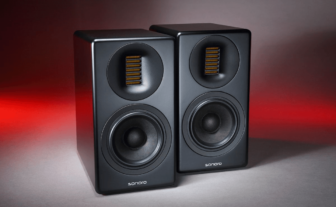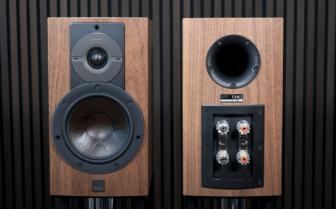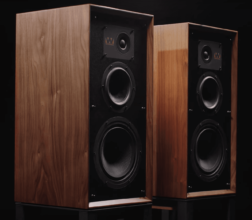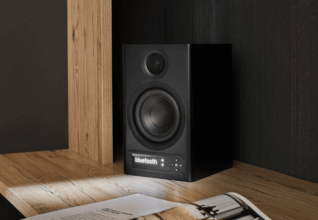Fyne Audio Vintage Five Review
Fyne Audio’s majestic Vintage Twelve impressed with a live sound that could be felt deep down. How much of that is in the small bookshelf speaker Vintage Five?
By Marius Dittert
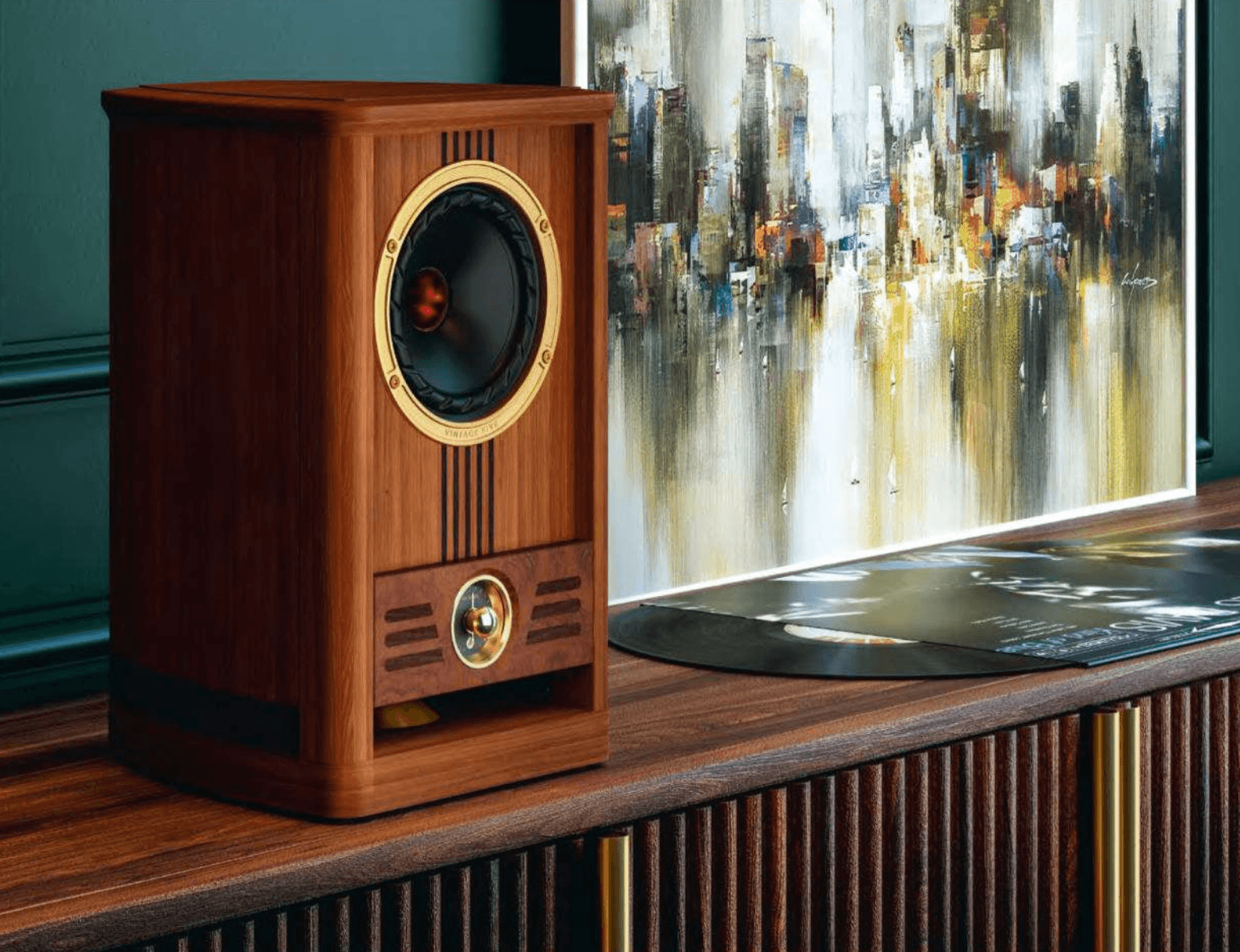
There are listening tests where even an experienced editor sits there with an open mouth. Such was the case with Fyne Audio’s Vintage Twelve. The two-way converter with a 12-inch coaxial driver, whose cabinet is about as big as Edinburgh Castle, started off in a way that made the test team’s trouser legs flutter.
And then you find yourself thinking: “Oh dear, Fyne Audio’s Vintage series offers an even larger model (the ‘Fifteen’ with a 15-inch bass)! How will that one perform? But how can you even set up such speaker beasts at home?”
The truth is, the author—and surely many readers—are hardly able to do so. After all, we’re not castle owners and appreciate a good relationship with our better halves. But there is a remedy—in the form of the small Vintage Five for a hefty $5,250 per pair.
If you’re now expecting praise for a noble little box, the author would like to inform you: The Vintage Five is not a jack-of-all-trades and not for everyone. But what it masters, it does exceptionally well.
The only 35-centimeter high two-way box with downfire bass reflex port shines with a high-density birch plywood cabinet handcrafted in Scotland. Fyne Audio refines it with an oiled and pair-selected real wood veneer of British walnut. Added to that are carefully anodized rotary knobs and metal parts and an adequately good terminal (see next page). In terms of value, the rather retro-looking Fyne speaker makes a very fine impression right down to the crossover equipped with high-quality components.
But also in terms of technology, the 6.2-kilogram Scottish box offers high quality: the point source IsoFlare. The 5-inch driver is an elaborate in-house design by Fyne engineers and relies on a compression chamber horn in coaxial arrangement.
Wonderfully Lively Sound
As the Vintage Five refrains from a larger upper bass boost and already cuts off its low frequencies at about 70 Hertz, placement close to the wall is quite possible. In the listening room, however, the Vintage Five first had to show what it can do when positioned freely in the room. After just a few bars, it was clear that the listening distance shouldn’t be too great. Just over two meters proved to be ideal, as did a slight toe-in towards the listening position, as this brought the right amount of liveliness. Ideal playing partners proved to be the Class-A integrated amplifier Luxman L-550AXII and once again the highly neutral multiplayer Technics SL-G700M2, which the test editor accessed via Chromecast and Tidal app.
Those who are dazzled by the vintage exterior of the Vintage Five might expect the soft, rich sound balance of the seventies, but that’s not what Fyne Audio offers us. On the contrary: What we could hear is a dry-fast, sinewy sound in the best sense, which clearly revealed the musical genes of the large Vintage Twelve—namely where the music plays: in the midrange. So that the bookshelf speaker doesn’t sound a bit brash, it demands suitable equipment and a listening room that doesn’t sound too bright.
Since the Vintage Five moves much less air and low-frequency sound than the Twelve, its music reproduction was also not a physical experience. But the “Five” appealed by no means only to the intellect: Due to its outstanding microdynamic capabilities, its luminous tonal colors, and its incredibly tactile sound, it gave especially successful chamber music recordings an authenticity and liveliness that few competitors can match.
If you want to verify this, put on the indie folk-pop album “Peace Or Love” by the duo Kings of Convenience: Two harmonious voices, two acoustic guitars, and now and then a double bass or a violin—with the “Five,” the music just shimmered through the listening room. And, typical for coaxial design, with dreamlike pinpoint localization and stable imaging. The only “weaknesses” were a slight coloration in the midrange and the not too deep-reaching bass, which found appropriate support in front of a rear wall.
CONCLUSION:
For $5,250, Fyne Audio offers comparatively little speaker. But what the Scots offer is luxuriously crafted and sounds wonderfully lively and up close, with clear limits in the deep bass. Since the Vintage Five requires little space and is electrically uncritical, Class-A and tube fans (but not only them) can build a small dream system with it for small to medium-sized listening rooms and short listening distances.

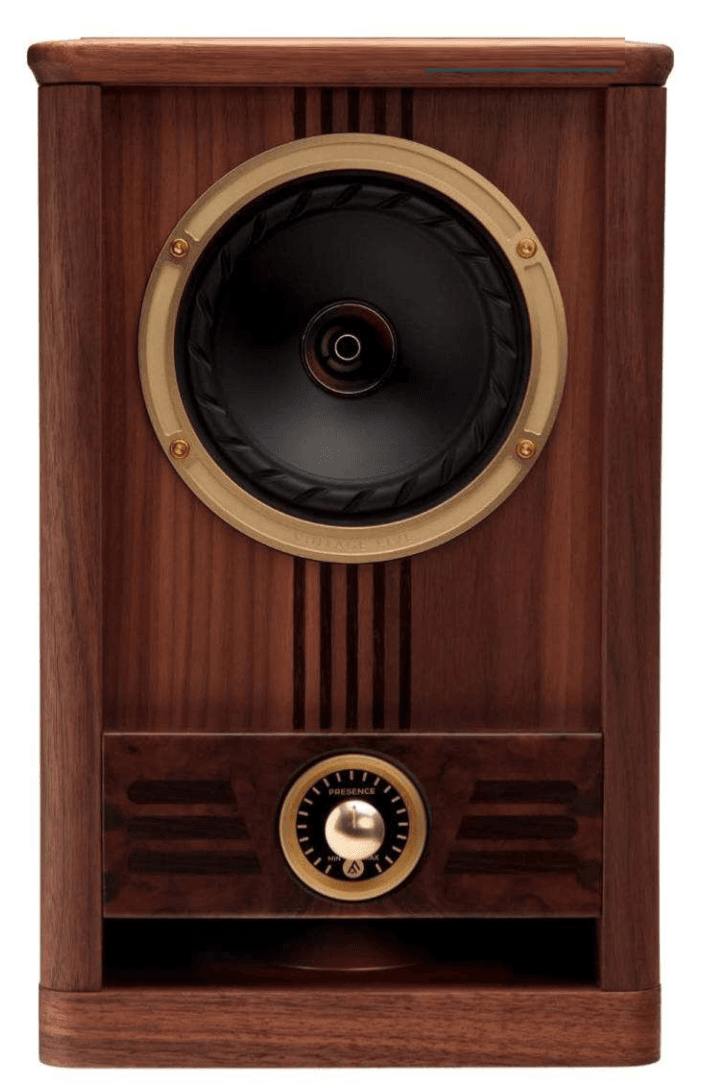
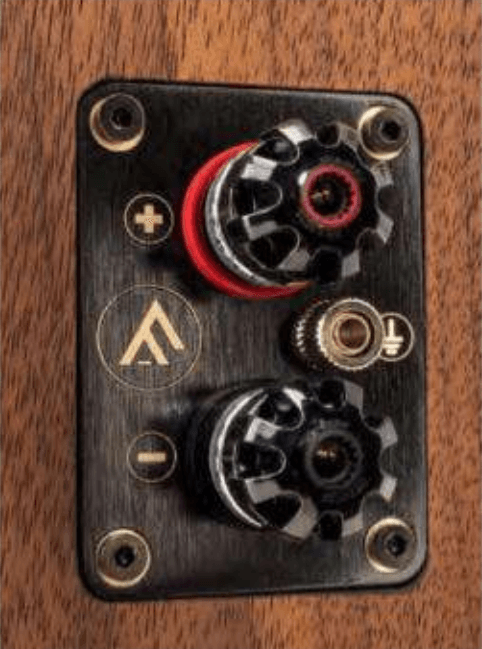
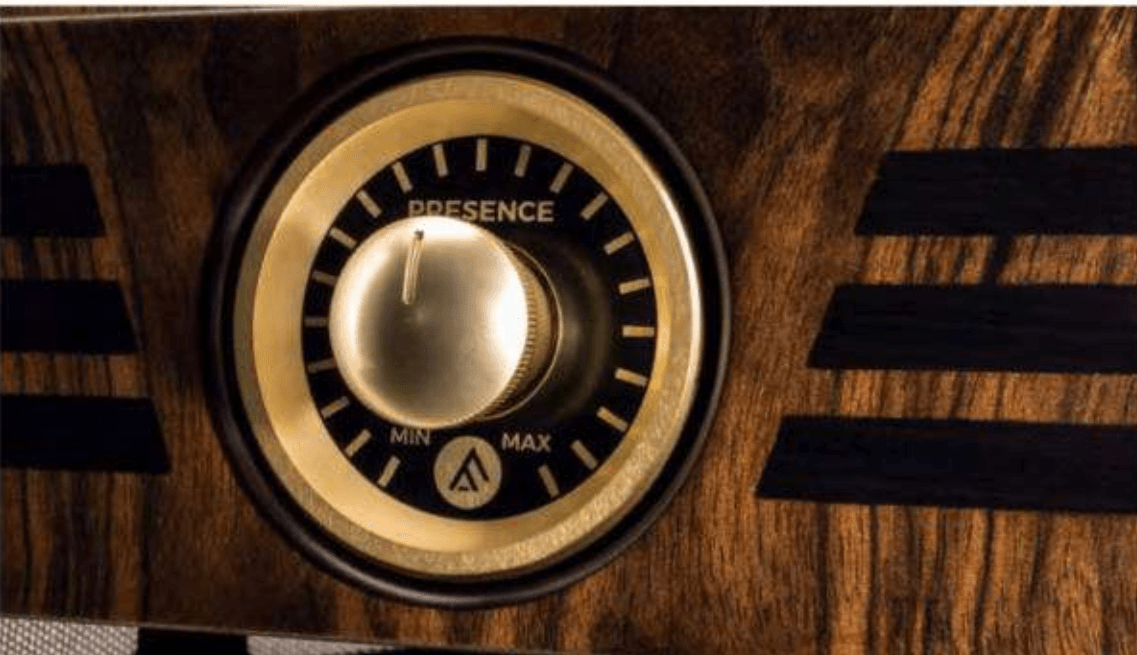
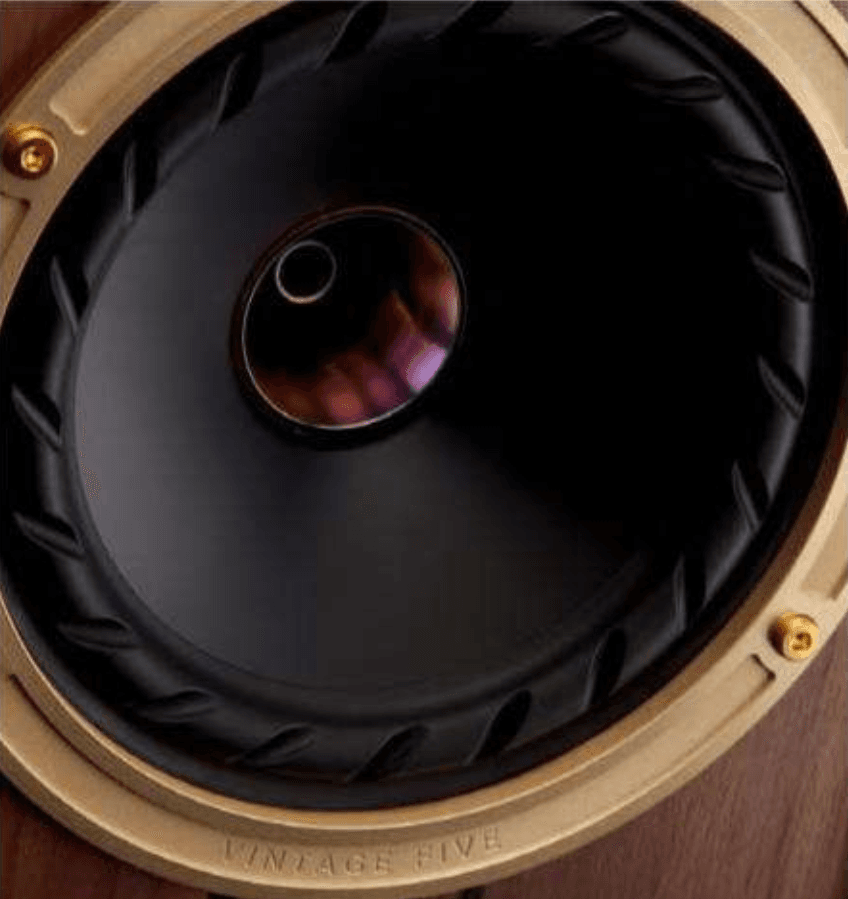
Fyne Audio Vintage Five
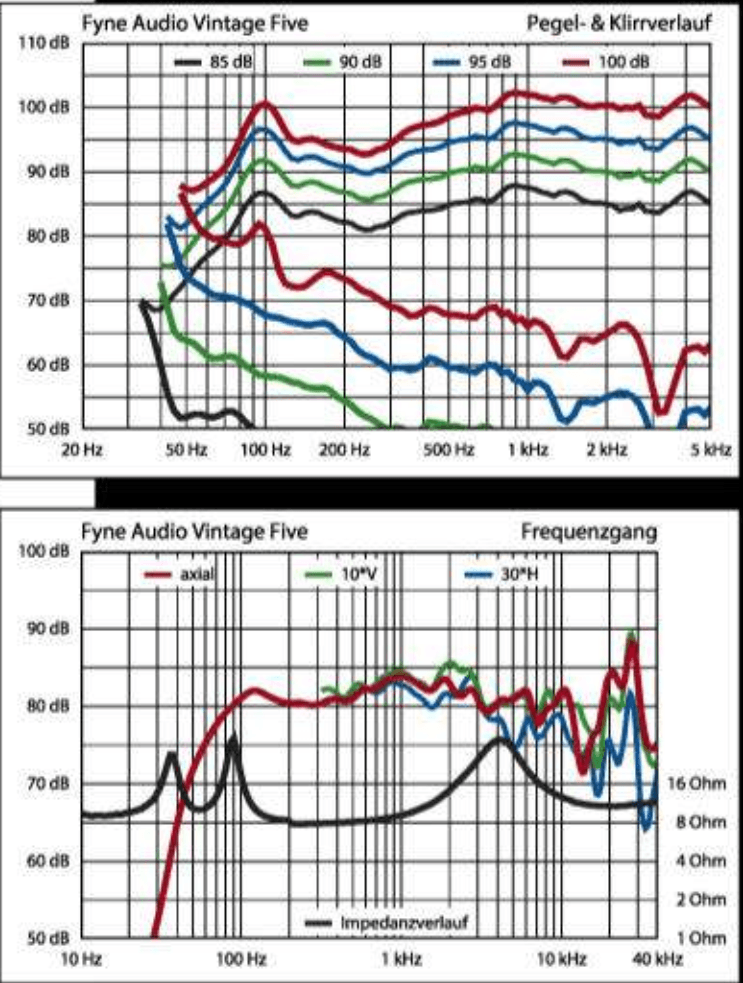
Two-way coaxial box with downfire bass reflex port. Distortion increases early and evenly towards lower frequencies, compression at 100 dBSPL L (above), maximum level 98 dBSPL L. Slight midrange emphasis with neutral “Presence” setting, otherwise quite balanced frequency response. Homogeneous dispersion up to 13 kHz, above which the super-high frequencies are canceled depending on the listening angle. Clean time behavior, very fast decay. Thanks to a decent efficiency of 82 dB/2 V at 8 Ω nominal impedance, the Fyne is also well suited for weaker tube amps, power recommendation 20 W/8 Ω.
AUDIO Rating 6.5/10
TECHNICAL DATA
General Information
- List Price: €5000 (approx. $5400)
- Warranty: 7 years
- Dimensions (W × H × D): 21.9 × 35.0 × 26.0 cm
- Weight: 6.2 kg
- Finish: Veneer / Foil / Lacquer: Yes / No / No
- Color: Walnut
- Design Principle: 2-way bass reflex
- Room Adaptation: None
- Special Features: Presence/Midrange control
Pros & Cons
✅ Pros:
✔ Lively sound
✔ Very stable imaging
✔ Non-critical impedance curve
✔ Luxurious build quality
❌ Cons:
✘ Limited deep bass
✘ Expensive
Ratings
| Category | 10-Point Scale |
|---|---|
| Neutrality | 8.6 |
| Detail Accuracy | 9.1 |
| Sound Localization | 10.0 |
| Spatial Presentation | 9.1 |
| Microdynamics | 9.7 |
| Max Volume | 8.6 |
| Bass Quality | 8.6 |
| Bass Depth | 7.6 |
| Build Quality | 10.0 |
Audio Benchmark
- Overall Rating: 155 Points (≈ 8.9/10)
- Price/Performance: High-End

INTERVIEW
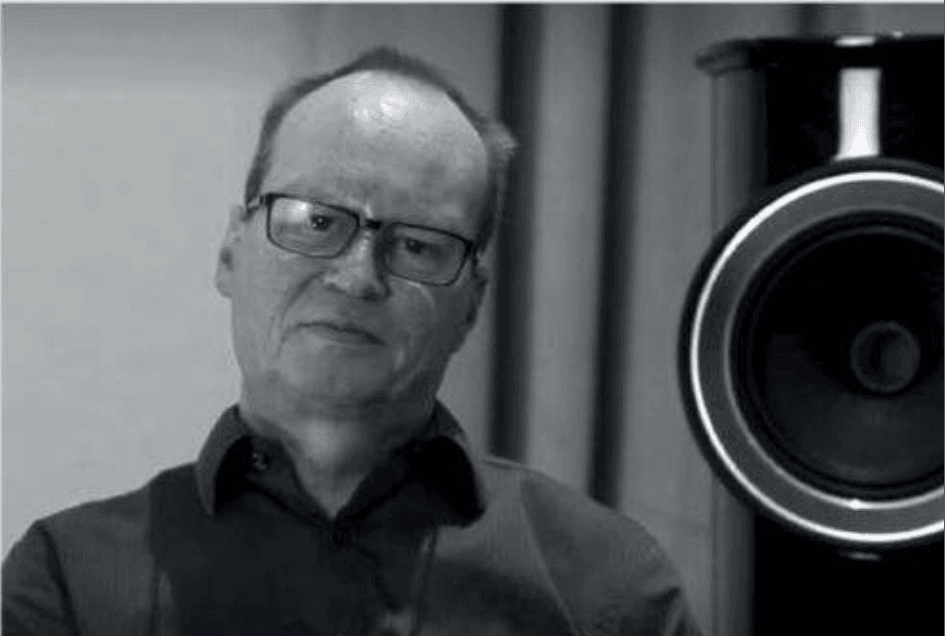
Dr. Paul Mills,
Technical Director of Fyne Audio
The Scottish speaker developer has been working with coaxial drivers for many years. Before his time at Fyne Audio, he was active at Tannoy.
What is the secret to the often very good stereo localization of coaxial speakers?
Mills: A well-designed coaxial speaker is a point source system where the woofer-midrange shares a common and time-aligned center with the tweeter unit. This allows our IsoFlare coaxial driver to achieve excellent stereo imaging, even off-axis. The sound energy is radiated isotropically (having the same physical properties in all directions), following the conical dispersion of the driver. The sound is thus produced as if it were coming from a single point in space. In the frequency range where our IsoFlare operates, the harmonic content of instruments is therefore much better preserved than with a conventional arrangement with discrete drivers. This is ultimately because the low and high frequencies are generated from the same point in space (a point source), and there are no time and phase differences between the overtones below and above the crossover point, as is the case with discretely constructed speakers.
What are the advantages of the coaxial radiation principle for modern living spaces, which are usually only slightly damped?
Mills: The amplitude ratio of fundamental tone and overtones remains exactly preserved both on-axis and at off-axis points. In a normal room, most of the sounds that the human ear perceives are reflections generated by the off-axis frequency response of the speaker. This means that the reflected energy has the same harmonic structure as the direct energy on-axis.
Why does Fyne use compression drivers in its coaxial speakers?
Mills: Our IsoFlare driver differs from a general coaxial speaker. Using a compression driver allows us to recess the tweeter and mount it at the acoustic center of the woofer—not simply in the middle—so we can achieve a coherent point source. Additionally, a compression driver is very efficient. Unlike a direct-radiating coaxial tweeter, there is therefore no thermal compression due to the heating of the voice coil.
Fyne Audio Vintage 5 Loudspeakers | Unboxing & Demo | Expressive Audio
In this video we unbox and take a listen to Fyne's new Vintage Five loudspeakers. The smallest in Fyne's new Vintage range, the ...



